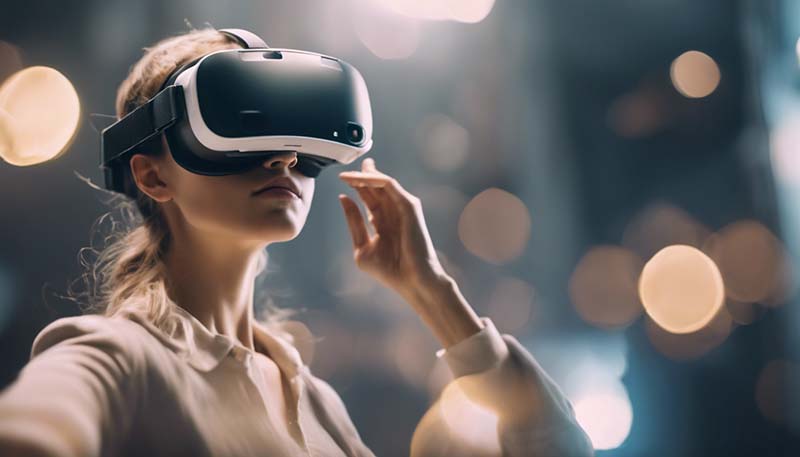Introduction
Virtual Reality (VR) is a rapidly evolving technology that has the potential to revolutionize various aspects of our lives.As the world grapples with the challenges of sustainable development,VR offers unique opportunities to address these issues in innovative ways.This article explores the role of VR in sustainable development,focusing on its applications in education,urban planning,environmental conservation,and more.
The Power of Immersive Experiences
One of the key strengths of VR is its ability to create immersive experiences that can simulate real-world scenarios.This can be particularly useful in the context of sustainable development,as it allows individuals to experience and understand complex issues in a more tangible way.
Education and Awareness
Education is a critical component of sustainable development,and VR has the potential to transform the way we learn about environmental and social issues.By providing immersive experiences that allow users to "walk in the shoes" of others or explore distant locations,VR can foster empathy and understanding,which are essential for promoting sustainable behaviors.
Case Study: VR for Environmental Education
Several organizations are already using VR to educate people about environmental issues.For example,the United Nations Environment Programme (UNEP) has developed VR experiences that allow users to explore the impacts of climate change on different ecosystems and communities.These experiences can help raise awareness and inspire action towards sustainable development goals.
Urban Planning and Design
Sustainable urban planning is essential for creating livable,resilient,and environmentally friendly cities.VR can play a significant role in this process by providing planners and stakeholders with a platform to visualize and interact with proposed designs in a virtual environment.
Benefits of VR in Urban Planning
- Collaboration: VR allows multiple users to simultaneously explore and discuss proposed designs,facilitating collaboration and consensus-building.
- Realistic Simulation: VR can simulate various factors such as sunlight,wind,and traffic patterns,enabling planners to assess the sustainability of a design more accurately.
- Cost and Time Efficiency: By allowing for virtual prototyping and testing,VR can save time and resources that would otherwise be spent on physical models or site visits.
Environmental Conservation
VR can also be a valuable tool for environmental conservation efforts.By providing immersive experiences of natural environments,VR can help raise awareness about the importance of biodiversity and the need for conservation.Additionally,VR can be used for training conservation workers in various skills,such as wildlife monitoring and habitat restoration.
Challenges and Limitations
While VR has significant potential to contribute to sustainable development,there are also challenges and limitations to consider.These include:
- Accessibility: High-quality VR experiences often require expensive hardware and software,which can limit accessibility for low-income communities and countries.
- Technological Limitations: Current VR technology still has limitations in terms of realism and interactivity,which can affect the overall experience and effectiveness of VR applications.
- Health and Safety Concerns: Prolonged use of VR can cause discomfort or health issues such as motion sickness,
 eye strain,or disorientation.
eye strain,or disorientation.
Conclusion
Virtual Reality holds great promise for advancing sustainable development through its applications in education,urban planning,and environmental conservation.However,it is essential to address the challenges and limitations of VR technology to ensure that its potential is fully realized and accessible to all.As VR continues to evolve,it has the potential to become a powerful tool in the quest for a more sustainable future.
Comment